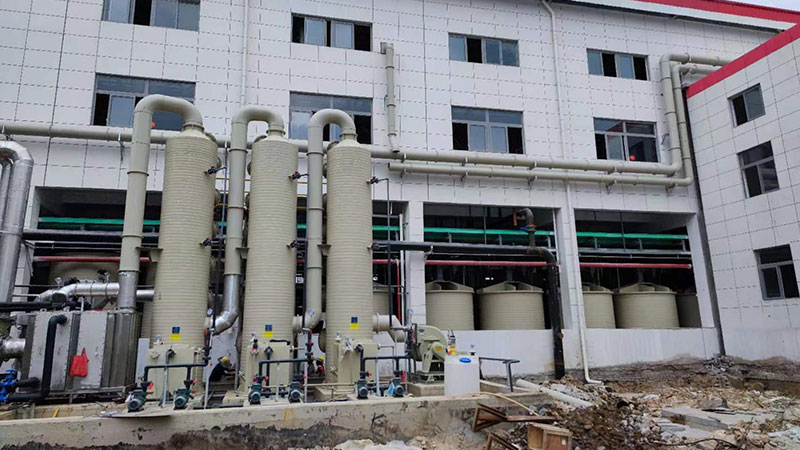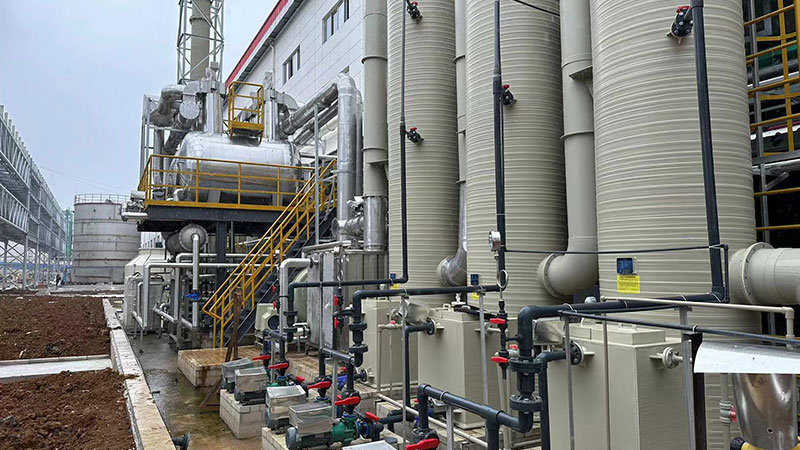Design Of Waste Gas Treatment Process
The organic waste gas pretreatment consists of two – stage alkali washing, one – stage water washing, and surface cooling mist removal.
- The alkali washing tower removes sulfuric acid mist and hydrogen chloride from the waste gas.
- After acidic components are removed, a water washing tower buffers to reduce the impact of entrained lye on subsequent adsorption equipment.
Pre – treated waste gas (acid – removed, de – watered, humidity – adjusted) is pressurized by a fan and sent to an activated carbon adsorption tank under suitable conditions. Once the activated carbon is saturated after a period of adsorption, its performance declines.
Periodic desorption of the organic waste gas from the activated carbon surface is required to restore its adsorption ability. This process uses the fact that activated carbon has high adsorption capacity at room temperature and low capacity at high temperature to recycle it, known as temprature swing adsorption in the industry.
Purified waste gas is discharged from the chimney’s high point, which has detection and online monitoring ports, along with a monitoring platform and guardrails, meeting relevant local and national standards.
TYIC is engaged in the manufacturing of acid mist absorption towers 、corresponding pipeline and relevant equipment, as well as the treatment of acid mist absorption in unorganized gases and the handling of acid-containing waste gases. (The acid mist removal rate of TYIC’s process acid mist absorption tower is 100%.)


ANYTHING YOU COULDN’T FIND?
Advantages of Our Company
TYIC focuses on the global market. We have the following advantages:
- Customized Payment Cycle
- Low Cost
- Professional Technical Team
- Strict Quality Control.
- Fast Respond Or Enthusiasm.
SEND US AN EMAIL
Request a Quote
According to the customer’s requirements and the product characteristics, complete the planning and design of the entire set of leaching and extraction production line.